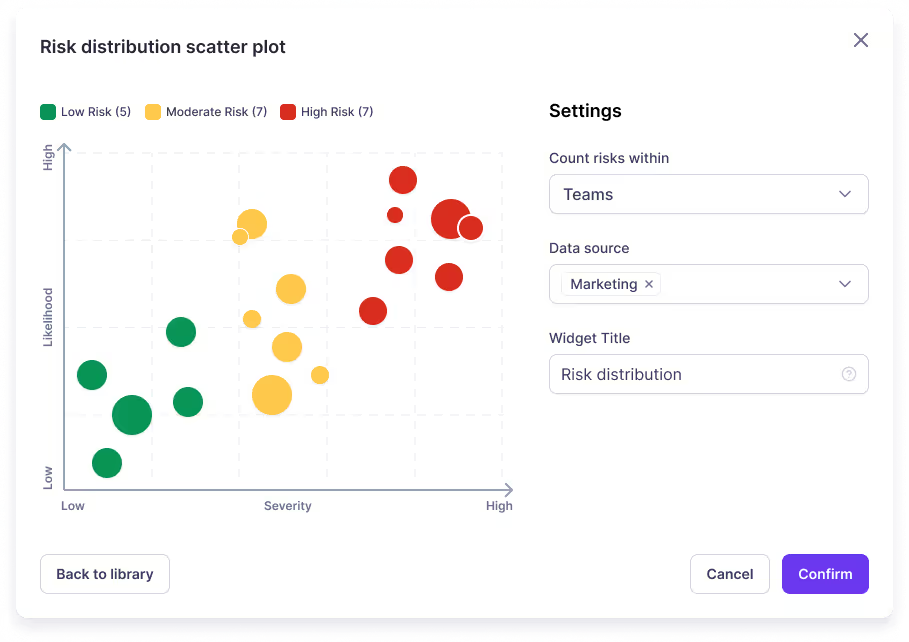Organizations that lead the market align everyone toward their desired direction.
Identifying your destination and developing your strategic plan to reach it is the easy part of the strategy process. Executing that plan is the hard part. Only when you achieve company-wide organizational alignment can you successfully do it.
In this article, we’ll discuss the following topics:
- What Is Organizational Alignment?
- Why Is Organizational Alignment Important?
- Benefits Of Organizational Alignment
- Types Of Organizational Alignment: Horizontal & Vertical
- From Organizational Alignment To Strategic Alignment
- How To Build Organizational & Cross-functional Strategic Alignment?
- Organizational Alignment Tools
- Achieve Strategic Organizational Alignment With Cascade 🚀
What Is Organizational Alignment?
Organizational alignment occurs when your employees’ activities progress your strategic objectives, and they use them to inform their decisions.
In simpler terms, when your employees and team members not only understand your organization's strategic goals but also use them to guide their decision-making, you have achieved organizational alignment.
Why Is Organizational Alignment Important?
When everyone in your organization is on the same page and understands how their individual efforts contribute to the overarching business strategy, extraordinary outcomes become possible.
⚙️Imagine your organizational structure as a well-oiled machine, with each part moving in sync with the others, all directed toward a common goal. That's the power of organizational alignment.
Organizational alignment is not just a one-time event or a static state; it's a continuous process that must be embedded in your company culture. It involves keeping every individual employee and team engaged, informed, and motivated, ensuring that their actions align with the organization's long-term goals. This alignment also extends to different departments, ensuring seamless cross-functional collaboration and teamwork to avoid any silos that might hinder progress.
Benefits Of Organizational Alignment
Embracing organizational alignment brings incredible benefits that positively impact both employees and overall company performance.
Let's dive into some of these benefits:
Enhanced Clarity & Focus
When employees are aligned with the organization's strategic objectives, they gain a clear sense of direction. Having clear goals and understanding how their individual contributions fit into the bigger picture allows them to focus their efforts on things that will impact the company's success.
Heightened Efficiency
Organizational alignment eliminates redundancy and confusion, streamlining workflows and improving efficiency. Employees no longer waste time on conflicting priorities or duplicate efforts. Instead, they collaborate seamlessly towards shared objectives, making the best use of time and resources.
Improved Financial Performance
Since an aligned organization becomes more efficient, this often leads to improved profitability and financial performance. Aligning employee efforts with strategic goals directly impacts the bottom line, making your company more competitive and sustainable in the long run.
Stronger Decision-Making
Organizational alignment empowers employees to make decisions that align with the company’s goals. When they understand the strategic context of their choices, they can make informed decisions that benefit the entire organization. This distributed decision-making speeds up processes and reduces bottlenecks.
Agility and Adaptability
In today's dynamic business landscape, organizations must be agile and adaptable to stay competitive. When employees are aligned with the company's vision, they can quickly respond to changes in the market, pivot fast, and take advantage of new opportunities.
📚 Recommended read: Cascade Strategy Report - You’re doomed, or you adapt.
Improved Employee Engagement
When team members feel connected to the bigger picture and understand how their work contributes to the company's goals, they become more committed to their roles. This increased engagement fosters a positive company culture and enhances overall job satisfaction, leading to a higher retention rate of valuable talent.
Types Of Organizational Alignment: Horizontal & Vertical
Organizational alignment manifests in different ways, with two primary types that play important roles in shaping the organizational structure and its effectiveness: horizontal alignment & vertical alignment.
Horizontal Alignment
This type focuses on fostering collaboration and communication among different departments or teams within the organization. By breaking down silos, it encourages seamless coordination at the same hierarchical level. Robust horizontal alignment enables free-flowing information and ideas, leading to a comprehensive and unified approach to achieving organizational objectives.
For example, in a manufacturing company, horizontal alignment ensures the smooth collaboration of production, quality control, and logistics departments. By sharing insights and working together, they streamline workflows and processes, reduce delays, and enhance product delivery to customers.
Vertical Alignment
Vertical alignment emphasizes synchronizing activities and goals across different hierarchical levels. It ensures that strategic objectives set at the top of the organization cascade down to frontline employees, creating a cohesive and consistent focus on shared targets. Effective leadership communication plays an essential role in establishing and maintaining this alignment.
For instance, in a retail company, vertical alignment ensures regional managers align sales targets with the company's revenue objectives. Store managers align strategies with regional targets, and sales associates align daily activities with store-level plans. This interconnected effort drives the company toward its desired outcomes.
The key to success: horizontal + vertical alignment
Both horizontal and vertical alignment are fundamental for a well-balanced, high-performing organization. Their combination enables effective collaboration while maintaining focus on the strategic direction.
From Organizational Alignment To Strategic Alignment
Organizational alignment and strategic alignment are interconnected but distinct concepts.
Strategic alignment is like the big picture - it's the broader concept that includes organizational alignment as one of its important parts. In simple terms, strategic alignment sets the direction and vision for the organization. On the other hand, organizational alignment makes sure that all employees, no matter their level, are on board and dedicated to making that vision a reality.
These two concepts work together to move the organization toward success.
How To Build Organizational & Cross-functional Strategic Alignment?
Building organizational and cross-functional strategic alignment requires a holistic approach.
Here are some key considerations to achieve this:
1. Break down silos
Misalignment often breeds conflicts and creates silos within an organization. Departments and teams may work in isolation, leading to inefficiencies and communication gaps. However, when the entire organization is aligned, collaboration and communication flow more freely.
Some actions you could take to break down silos could be:
- Foster collaboration between departments, encouraging joint projects and initiatives.
- Address complex challenges through cross-functional task forces, pooling expertise from various departments.
- Promote learning and idea exchange through interdepartmental knowledge-sharing sessions.
- Enhance teamwork and skills with workshops and training involving employees from multiple departments.
- Create an open environment for feedback and suggestions, fostering continuous improvement.
How to create horizontal alignment in a heavily verticalized organization?
In heavily verticalized organizations, achieving strategic alignment is crucial yet challenging. This organizational structure often leads to isolated silos among departments, causing communication and collaboration to suffer. This hinders the flow of information, stifles innovation, and impedes problem-solving efforts.
To foster cross-functional strategic alignment, leaders must focus on breaking down these silos by encouraging full visibility across the organization.
👉🏻How Cascade can help:
With the Alignment Maps feature, you can visualize how different organizational plans work together and how your corporate strategy breaks down into operational and functional plans. This powerful tool helps break down silos and ensures successful alignment across your organization.
.png)
You can even visualize your alignment at an objective level to easily spot dependencies, blockers, and risks that may lie along your strategic journey.
%20(1).png)
2. Align individual goals with organizational goals
To achieve strategic organization-wide alignment, it's essential to ensure that goals at all levels are aligned with the broader company goals.
When team members understand how their individual contributions connect to the overall strategy, they can make more effective strategic decisions.
In an ideal world, every person has clarity on the company's strategy, develops their own goals, and aligns them with the strategic priorities. But in reality, this level of alignment takes is hard to get to.
👉🏻How Cascade can help:
In Cascade, you can set metrics (KPIs and/or OKRs, depending on the framework you use) at an individual, team, and company level. This holistic approach to performance management ensures that goals at all levels of the organization are perfectly coordinated in the same direction.
Through Cascade’s powerful integrations, you can import data from the different tools your teams use and consolidate all your business systems underneath a unified roof to reach the most clarity in your strategic decision-making.
By importing these key metrics into Cascade’s Metrics Library, you automatically connect your business data directly to your core initiatives for clear, data-driven alignment. With all your core metrics in one place, you can achieve centralized business observability.
.png)
3. Set your strategy cadence
Establishing a clear strategy cadence is the most important part of keeping everyone in sync. It ensures that your strategy is at the forefront of everything you do, guiding everyone’s actions and decisions.
Effectively communicate & report on strategy
To establish a solid strategy cadence, you need to define a consistent schedule for communication and reporting on the progress of your strategic initiatives. This regular communication keeps all stakeholders, from top-level management to frontline employees, well-informed about the strategy’s progress. By keeping everyone in the loop, you empower them to make better decisions and contribute effectively to the organization's success.
👉🏻How Cascade can help:
With Cascade’s dashboards & reports, everyone in your organization can access an accurate picture of your strategic performance in real-time, quickly identify trends, and discover insights that can accelerate your strategy.
.png)
4. Drive smooth communication & stakeholder engagement
Making sure everyone stays informed and engaged is more than just sharing the strategy and company goals. It's about keeping people in the loop about all things: the good, the bad, and the ugly too. This includes addressing any risks or obstacles that might come up not just to internal audiences, but to external stakeholders too.
Achieve strategic transparency: openness on strategic progress and blockers
Being transparent about your strategic progress means sharing both your successes and challenges, and being open about any potential blockers that could slow you down. The beauty of transparency lies in building a culture of trust and accountability.
Strategic transparency is not just a one-way street! It encourages open dialogue and welcomes feedback from everyone involved. This input helps you spot potential roadblocks early on, allowing you to respond quickly and adapt to any challenges that may pop up.
👉🏻How Cascade can help:
With Cascade’s team updates functionality, you can collect qualitative, contextual updates on how initiatives are progressing from your teams. They can leave these updates by recording videos or writing notes to document the journey for stakeholders.
%20(1).gif)
Cascade also has risk management capacities. Team members can add risks and mitigations so everyone is aware of possible obstacles and what is the action plan to solve them. You can easily see these risks with the Risk Distribution Scatter Plot widget and add it to your dashboards and reports.

Sharing strategic progress with external stakeholders
As you work towards achieving strategic alignment, remember the importance of sharing your progress with external stakeholders – including investors, customers, and partners. Keeping them informed is key for aligning their expectations and gaining their cooperation and support.
When your external stakeholders are aware of your strategic progress and see that you're delivering on your promises, it builds up confidence. This can lead to stronger investor support, enhanced customer loyalty, and more robust partnerships.
👉🏻How Cascade can help:
Cascade allows you to share and collaborate on reports with people outside your organization. You can share your report snapshots, invite them to join the conversation and interact with you in real time.

Organizational Alignment Tools
There's no secret formula to strategic alignment, but finding the right set of tools for your organization is a great start. Using a specific framework can foster alignment, but we highly recommend complementing it with a dynamic tool to truly see how everything in your organization aligns – enter the strategy execution platform.
Let's check out some organizational alignment tools you can use:
Frameworks
OKRs (Objectives and Key Results): This superhero of goal-setting frameworks ensures clear, ambitious objectives and measurable key results to track progress. With OKRs, your team will know their roles in achieving the bigger picture.
📚 Read more about the OKR Framework here!
McKinsey 7S: Think of this organizational alignment model as a puzzle that shows how all the pieces in your organization fit together. By getting these pieces aligned, you'll create a well-coordinated machine that smashes its goals.
📚 Read more about the McKinsey 7S Framework here!
The world of strategy frameworks is HUGE. While these are our top recommendations for achieving organizational alignment, there are other frameworks worth exploring that could work for you as well. Discover more strategy frameworks in our article: How to Choose a Strategic Framework.
Strategy Execution Platform
A strategy execution platform like Cascade provides a centralized hub where you can access all your strategic plans, goals, and progress in one place. This visibility ensures seamless alignment and collaboration across your organization, breaking down silos and enabling teams to work together toward shared objectives.
Achieve Strategic Organizational Alignment With Cascade 🚀
Cascade is the world’s #1 strategy execution platform that helps businesses connect siloed metrics, initiatives, and investments with their realized performance for accelerated decision-making.
It is the only platform that spans the entirety of your ecosystem to understand the relationships between your business inputs (e.g., metrics, initiatives, investments) and outcomes (e.g., expected results, forecasted revenue, margins, etc.). This way, it allows you to clear dependencies and mitigate potential risks faster to improve your odds of success.
With Cascade, you can reach organization-wide strategic alignment and connect the dots to achieve centralized visibility over your execution engine.
Ready to take Cascade for a spin? Sign up today for a free forever plan or book a guided 1:1 tour with one of our Cascade in-house strategy execution experts.
FAQs
How To Measure Organizational Alignment?
Measuring organizational alignment is a real challenge, but three tactics can help:
- Reviewing progress towards strategic objectives from the last quarter, though it's a lagging indicator and doesn't reflect the current state of alignment.
- Creating an organizational alignment survey and asking employees about their understanding of the company's strategic plan and strategic priorities.
- Using a strategy execution platform, such as Cascade, to empower employees to engage with the plan and align team goals with organizational goals. Combining these methods can provide a comprehensive view of alignment within the organization.
📚 Read more about measuring strategic alignment in our article: Strategic Alignment Benefits - Let's Actually Quantify The Value!





.png)
.jpg)
.jpg)
%20(1)%20(1)%20(1)%20(1)%20(1).png)



